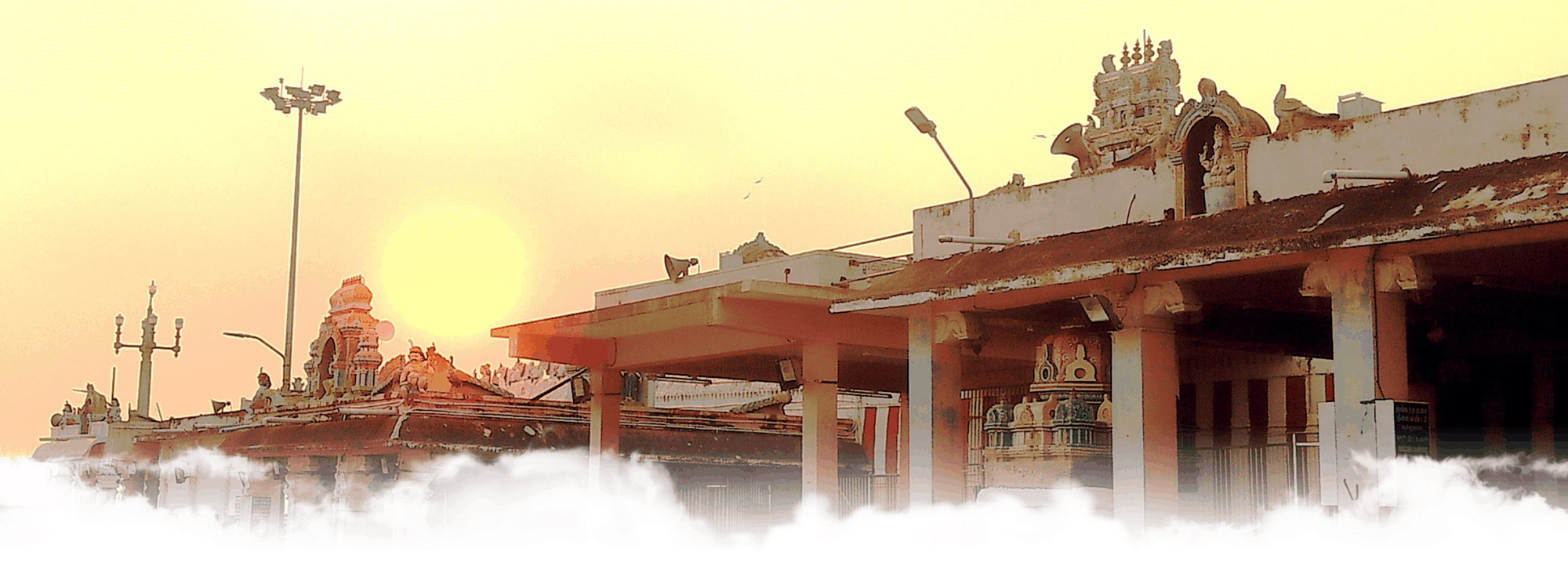
PALANI MURUGAN, THE SACRED GEM OF DINDIGUL
Located in the foothills of Palani at the heart of Dindigul stands the millennia-old temple of The Palani Murugan. Also known as the Arulmigu Dandayudhapani Swami Temple, this abode has been drawing millions of devotees every year for centuries. It will continue to do so for many more to come, for the universal attraction it has become to the pilgrims all over the world.
The legend
As per the Hindu mythology, Lord Shiva was presented the Fruit of Knowledge by Sage Naruda which held the elixir of knowledge within. Lord Shiva wanted to divide the fruit equally among his two sons, Ganesha and Murugan but was highly counselled by the sage against cutting it. To overcome the dilemma, he decided that the first one to circle the world thrice shall be rewarded with the fruit. Quick to accept, Lord Murugan, embarked on his journey mounted on his peacock. The more thoughtful of the two Ganesha, began to circumambulate his parents Lord Shiva and Goddess Shakti, conjecturing the world to be no more than them. Delighted and impressed by their son’s devotion, Lord Shiva awarded the fruit to him.Murugan felt the urgency to get matured and gather wisdom. In his quest to know more about himself, he went into meditation atop the hills of Palani.

An Odyssey against time
An Imperishable Architecture.
The mystics of the temple.
SWAMI SIVANANDA
Swami Siva a prodigy, and the most recent of the swamis is a well-known mystic to his disciples and devotees of Lord Murugan. Predicted by the sadhu swamis to leave home at an early age, he began to follow the path to become a Siddha himself.
As days began to roll by, his advancing age and his continuous practice to know himself through his devotion to Lord Murugan, the boy matured to become a full sanyasi and a big batton. He spent his life spreading his wisdom using his knowledge to benefit others and following his commitment to his supreme idol.
Years went by and the time came for sadhu Swamy to dissolve himself for eloping with god. In the end, with the ever-increasing exclamation of Lord Mugun on his mouth, he passed away. In the folklore swami’s name became a legend for his eternal devotion to Kartikey.
SAINT AARUMUGATHAMBIRAN
The most well known of the siddhas and perhaps the most mysterious one. Saint Aarumugathambiran, who is also known as Arumuganeri, is thought to have possessed mystical powers according to south-Indian folklore. At his time many of Muruga’s devotees had to cross through Nalkasi near Ottenchattiram, a river which is followed by a forest to reach Palani temple. Ninkasi was one of the many rivers which led to Palani. There was an instance when the devotees had to cross the river at a particular time of the year when water flooded through the banks of the river. Devotees from villages waited for Arumuganar hoping him to make their way through the river. The water level of the river receded, and devotees with Kavadis’ (religious offerings) followed as Aarumuganar sprinkled the sacred ash upon the river and his pirambu (stick) kissed the surface opening the gateway for them to cross. Even now the temple authorities at Palani, the temple would wait for the arrival of Arumuganar’s hoping him to do the ucchi kaala poojai at 12 pm. Such had become the fame of Arumuganar and his kavadi.
He is also known to have once made fishes in a fish curry jump out alive.
The Scientific analysis
As the Kaliyuga set, which is about 4900 years before the current timeline, Muruga’s idol was installed on top of the sacred mountain as it was worshipped for years to come. The unfortunate situation now is that the idol stands slender and could collapse at any time. Around 100 years ago, a Siddha living in Palani who was one of the trustees of this temple, supposedly scraped the material from the back of the idol and diluted it to make medicines to be sold for commercial purposes.
Many famous and well-established mineralogists could not figure out the mineralogy and composition of the idol upon investigation. Even the Perkin-Elmer 707 atomic absorption spectrophotometer failed to identify and the trace elements. It was concluded that it was too difficult even for modern scientific analysis to penetrate the Divine Structure.
Dive deep into the facts
Sundaranandar Siddhar
Palani among the most sacred religious abodes of Lord Murugan has also long been a powerful spiritual healing centre. Its past enriched in antiquity, legend, mythology, epic battles along with stories of great sages that honour literature even as the days went by.
The great shrine is located at 1500 feet above sea level.
For centuries its essence has been recorded by the Tamil poets, breaking the barriers of religion and creed as this Tamil literature is enjoyed by all.
According to Saiva Siddhanta,
“The path to enlightenment is divided naturally into four stages of the soul’s evolutionary process. Carya (virtue and selfless service); kriya (worshipful sādhanas); yoga (meditation under a guru’s guidance); and finally, jñāna, the wisdom state of a realized soul. For those who are striving for enlightenment, these stages may be understood as follows: Carya, kriya, yoga and jñāna are the sequence of the soul’s evolutionary process, much like the natural development of a butterfly from egg to larvae, from larvae to pupa, from pupa to caterpillar, and then the final metamorphosis from caterpillar to butterfly.”
Lord Murugan at Palani represents the final stage of one’s spiritual evolution embarking the onset of enlightenment.
A Rich tradition
Many festivals are associated with the temple at Palani. Below lies the account.
